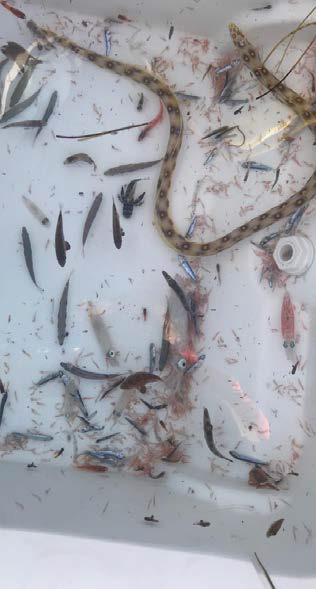Positive results in the LIFE program to protect two grouper species
As we mentioned in our most recent issue of this Journal, in October 2019 the staff of the Réserve began to collect larvae as part of the European LIFE BIODIV’OM program for the preservation of the Nassau grouper and the giant grouper, two globally endangered species. After this preparatory part of the project, the Réserve will now put its knowledge to work by collecting the post-larvae fish—sadly more than 90% die before settling by our shores—with the goal of identifying the grouper, isolating them, allowing them to mature in an aquarium, before releasing them in their natural milieu once they have reached a size that allows them a better chance of survival. Two exploratory collections took place in January and February 2020, over the course of seven consecutive nights, when the moon was not very bright to maximize the efficiency of the light on the sampling devices. The first results were very encouraging, especially in terms of the number of individuals as well as the diversity of the species observed. The difficulty was identifying the grouper among all the newly spawned fish, so certain examples were placed in an aquarium until their identification can be certain, then have been be returned to the sea. This exploratory phase, which comprises the identification of the larvae and the calendar for the arrival of the alevins— all species do not reproduce at the same time—should have been completed by May, but was delayed by the arrival of Covid-19 on a worldwide basis.

















